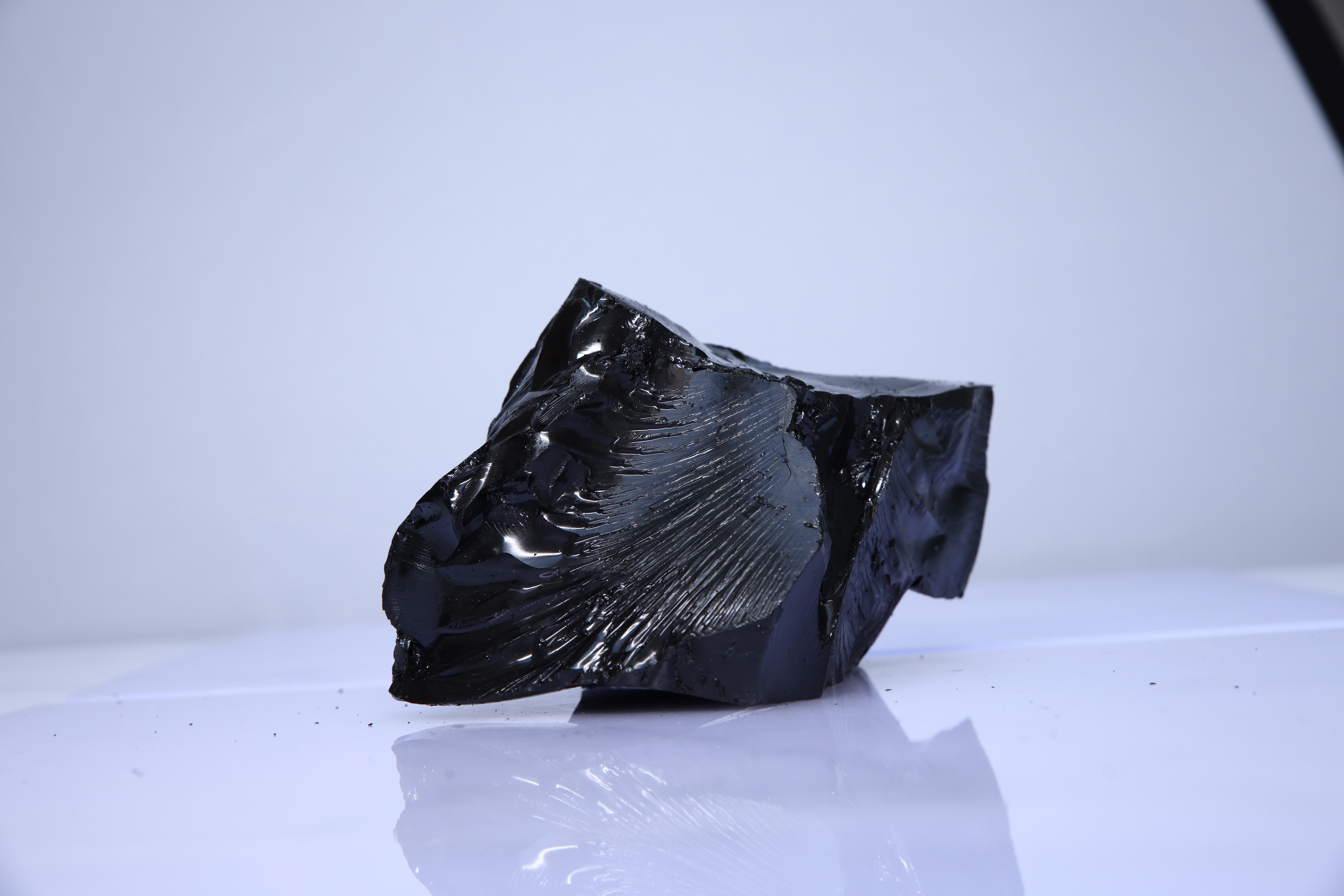Oxidised Bitumen
[edit] What is oxidised bitumen?
Oxidised bitumen, also known as blown bitumen, is a type of bitumen that has undergone a process of air blowing to enhance its properties. This process involves blowing air through hot bitumen, which results in a more controlled oxidation process, leading to improved performance characteristics such as higher softening point, reduced penetration, and increased durability. Oxidised bitumen is widely used in various industrial applications due to its superior properties.
[edit] Types of Oxidised Bitumen
Oxidised bitumen is classified based on its softening point and penetration grades. Some common types include:
- Oxidised Bitumen 75/25: Softening point of 75°C and penetration of 25 dmm.
- Oxidised Bitumen 75/30: Softening point of 75°C and penetration of 30 dmm.
- Oxidised Bitumen 75/35: Softening point of 75°C and penetration of 35 dmm.
- Oxidised Bitumen 85/25: Softening point of 85°C and penetration of 25 dmm.
- Oxidised Bitumen 85/30: Softening point of 85°C and penetration of 30 dmm.
- Oxidised Bitumen 85/40: Softening point of 85°C and penetration of 40 dmm.
- Oxidised Bitumen 85/40: Softening point of 85°C and penetration of 40 dmm.
- Oxidised Bitumen 90/10: Softening point of 90°C and penetration of 10 dmm.
- Oxidised Bitumen 90/15: Softening point of 90°C and penetration of 15 dmm.
- Oxidised Bitumen 90/40: Softening point of 90°C and penetration of 40 dmm.
- Oxidised Bitumen 95/25: Softening point of 95°C and penetration of 25 dmm.
- Oxidised Bitumen 105/35: Softening point of 105°C and penetration of 35 dmm.
The selection of the type depends on the specific requirements of the application.
[edit] Characteristics of Oxidised Bitumen
Oxidised bitumen possesses several key characteristics that make it suitable for a wide range of applications:
- High Softening Point: The air blowing process increases the softening point, making oxidised bitumen suitable for high-temperature applications.
- Low Penetration: Reduced penetration indicates higher hardness and stiffness, making it ideal for applications requiring durability.
- Resistance to Deformation: Enhanced resistance to deformation under load, which is crucial for industrial applications.
- Chemical Stability: Oxidised bitumen is chemically stable, ensuring long-term performance without significant degradation.
- Water Resistance: High resistance to water penetration, making it suitable for waterproofing applications.
[edit] Uses and Applications of Oxidised Bitumen
Oxidised bitumen is used in a variety of applications across different industries:
- Waterproofing: Used in roofing, basement waterproofing, and other structures requiring moisture protection.
- Road Construction: Employed in the production of mastic asphalt for road surfaces, offering enhanced durability and resistance to deformation.
- Insulation: Used in electrical insulation due to its dielectric properties and resistance to electrical conduction.
- Pipe Coating: Provides corrosion protection for pipelines, especially in harsh environmental conditions.
- Paints and Coatings: Serves as a base material in protective coatings for various surfaces, including metal and concrete.
- Adhesives: Used in the production of industrial adhesives and sealants.
- Rubber Industry: Acts as a raw material in the manufacturing of rubber compounds for various applications.
[edit] Advantages of Oxidised Bitumen
- Enhanced Durability: The oxidation process increases the durability of bitumen, making it suitable for long-lasting applications.
- Thermal Stability: High resistance to temperature variations ensures stable performance in different climatic conditions.
- Versatility: Can be used in a wide range of applications, from construction to industrial manufacturing.
- Ease of Application: Easy to apply using standard techniques, reducing the need for specialised equipment.
- Environmental Resistance: High resistance to water, chemicals, and UV radiation ensures longevity in exposed environments.
[edit] Disadvantages of Oxidised Bitumen
- Brittleness at Low Temperatures: Oxidised bitumen can become brittle at low temperatures, which may limit its use in cold climates.
- Cost: The air blowing process adds to the cost, making oxidised bitumen more expensive than conventional bitumen.
- Handling Precautions: Requires careful handling during application to avoid health and safety risks associated with hot bitumen.
- Limited Flexibility: Reduced flexibility compared to non-oxidized bitumen, which may limit its use in certain applications.
[edit] Price Determination Factors
Several factors influence the price of oxidised bitumen:
- Raw Material Costs: The price of crude oil, the primary raw material for bitumen, directly affects the cost of oxidised bitumen.
- Production Costs: Costs associated with the air blowing process, including energy and labour, impact the final price.
- Market Demand: Higher demand for oxidised bitumen in specific industries or regions can drive up prices.
- Transportation Costs: Shipping and logistics expenses contribute to the overall cost, especially for international markets.
- Quality and Specifications: Higher quality oxidised bitumen with specific performance characteristics may command a premium price.
- Economic Conditions: General economic conditions and fluctuations in currency exchange rates can influence pricing.
[edit] Production Process of Oxidised Bitumen
The production of oxidised bitumen involves the following steps:
- Heating: The bitumen is heated to a temperature of around 240-270°C to reduce its viscosity.
- Air Blowing: Air is blown through the heated bitumen, initiating the oxidation process. This step typically occurs in a reactor or blowing column.
- Cooling: The oxidised bitumen is cooled and solidified to obtain the desired properties.
- Packaging: The final product is packaged in drums, bags, or other suitable containers for distribution.
[edit] Environmental and Safety Considerations
The production and use of oxidised bitumen involve several environmental and safety considerations:
- Emissions: The air blowing process can produce emissions that need to be controlled to minimise environmental impact.
- Handling Safety: Hot bitumen poses risks of burns and inhalation hazards, requiring appropriate safety measures during handling and application.
- Waste Management: Proper disposal of waste materials generated during production and application is essential to prevent environmental contamination.
[edit] Innovations and Developments in Oxidised Bitumen
Recent advancements in the production and application of oxidised bitumen include:
- Modified Bitumen: Blending oxidised bitumen with polymers to enhance performance characteristics such as elasticity and temperature resistance.
- Sustainable Production: Developing environmentally friendly production methods to reduce emissions and energy consumption.
- Application Techniques: Innovations in application methods to improve efficiency and reduce health and safety risks.
[edit] Case Studies and Practical Examples
- Infrastructure Projects: Use of oxidised bitumen in major road construction projects, showcasing its durability and performance in heavy traffic conditions.
- Industrial Applications: Case studies of successful use in waterproofing and insulation in industrial facilities, highlighting its versatility and effectiveness.
- Research and Development: Ongoing research projects aimed at improving the properties and applications of oxidised bitumen.
[edit] Future Trends in Oxidised Bitumen
The future of oxidised bitumen looks promising, with several trends likely to shape its development:
- Sustainability: Increased focus on sustainable production methods and the use of renewable raw materials.
- Performance Enhancement: Continued research into additives and modifications to further improve the performance characteristics of oxidised bitumen.
- Global Demand: Growing demand for infrastructure development and industrial applications in emerging markets, driving the need for high-performance materials like oxidised bitumen.
- Regulatory Changes: Evolving environmental regulations and standards that may impact production processes and product formulations.
[edit] Conclusion
Oxidised bitumen is a versatile and durable material with a wide range of applications in construction, industrial manufacturing, and other sectors. Its enhanced properties, achieved through the air blowing process, make it an ideal choice for demanding applications. While there are some disadvantages and cost considerations, the benefits of oxidised bitumen often outweigh these challenges, making it a valuable material in modern infrastructure and industrial projects. The ongoing advancements and innovations in this field are likely to further enhance its performance and sustainability, ensuring its continued relevance in the years to come.
[edit] Related articles on Designing Buildings
- Asphalt
- Composites.
- Construction materials
- Metal in construction.
- Mineral.
- Phase change materials.
- Resilient flooring.
- Sustainable materials for construction.
- Types of biobased materials.
- Types of materials.
- Types of road and street.
- Use of ceramics in construction.
[edit] External links
Featured articles and news
Shading for housing, a design guide
A look back at embedding a new culture of shading.
The Architectural Technology Awards
The AT Awards 2025 are open for entries!
ECA Blueprint for Electrification
The 'mosaic of interconnected challenges' and how to deliver the UK’s Transition to Clean Power.
Grenfell Tower Principal Contractor Award notice
Tower repair and maintenance contractor announced as demolition contractor.
Passivhaus social homes benefit from heat pump service
Sixteen new homes designed and built to achieve Passivhaus constructed in Dumfries & Galloway.
CABE Publishes Results of 2025 Building Control Survey
Concern over lack of understanding of how roles have changed since the introduction of the BSA 2022.
British Architectural Sculpture 1851-1951
A rich heritage of decorative and figurative sculpture. Book review.
A programme to tackle the lack of diversity.
Independent Building Control review panel
Five members of the newly established, Grenfell Tower Inquiry recommended, panel appointed.
Welsh Recharging Electrical Skills Charter progresses
ECA progressing on the ‘asks’ of the Recharging Electrical Skills Charter at the Senedd in Wales.
A brief history from 1890s to 2020s.
CIOB and CORBON combine forces
To elevate professional standards in Nigeria’s construction industry.
Amendment to the GB Energy Bill welcomed by ECA
Move prevents nationally-owned energy company from investing in solar panels produced by modern slavery.
Gregor Harvie argues that AI is state-sanctioned theft of IP.
Experimental AI housing target help for councils
Experimental AI could help councils meet housing targets by digitising records.
BSRIA Occupant Wellbeing survey BOW
Occupant satisfaction and wellbeing tool inc. physical environment, indoor facilities, functionality and accessibility.
























